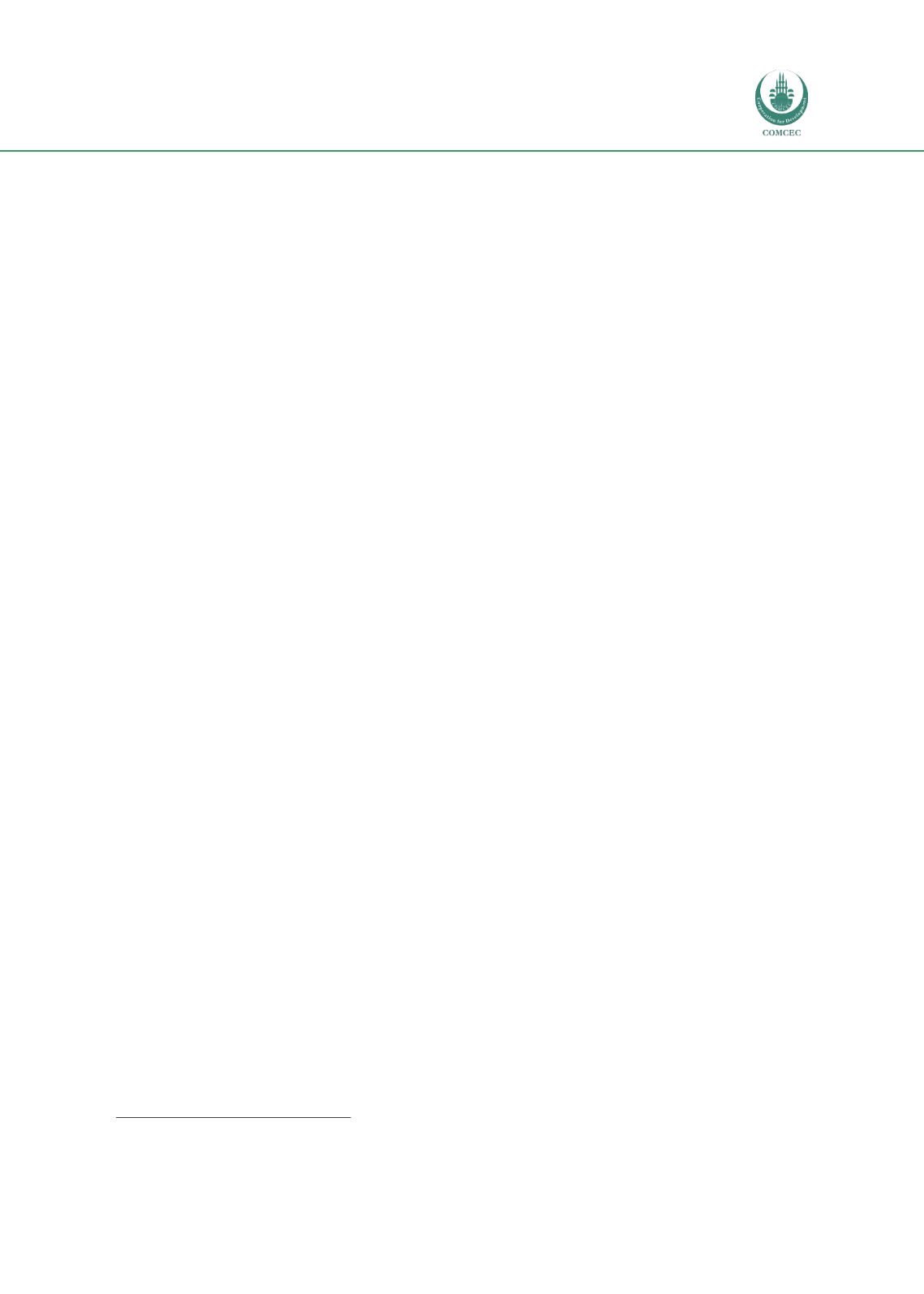

Improving Agricultural Market Performance:
Creation and Development of Market Institutions
107
prices way below the world market average as a result of prices fixed by the State.
205
Such
practices demonstrate the ineffectiveness of Tunisia’s agricultural trade policy and public
import monopolies, marketing boards, and state-owned enterprises as described in the
previous section.
Finally, the intervention power and, hence, effectiveness of the selected market institutions is
further impeded due to a sharp dichotomy between export-orientated and domestic-
orientated agricultural producers as the former enjoys considerable forms of aid and subsidy
programs (e.g. wholly exporting regimes, offshore regimes, export subsidies, and investment
incentives).
206
This considerably hampers the effectiveness of the entire sector as exports of
these subsidized agricultural products have caused domestic shortages and food price
inflation, where the selected market institutions need to anticipate on through further market
intervention.
For market institutions, it is important to conduct policy advocacy and continuously liaise with
Government officials to ensure this dichotomy is mitigated. After all, it is the Government of
Tunisia which take decisions on these aid and subsidy programs, which can’t be directly
influenced by the market institutions and their powers. State-owned economic enterprises
such as STS, OCT, and Ellouhoum Company, which enjoy monopoly powers on importing
certain commodities, are directly confronted with these domestic shortages and could play an
important role in policy advocacy supported by market intelligence, data, and statistics.
5.2.4 Need Assessment Analysis
The objective of this section is to identify and select certain crops, products, or commodity
groups for which a need exists to create a market institution and to further develop existing
agricultural and food market institutions facing inefficiencies and deficiencies.
Creating New Market Institution(s)
One of the bottlenecks in Tunisia is the absence of an integrally coordinated approach. To
improve integral coordination and improve synergies and efficiencies of the selected market
institutions, the Inter-Professional Agricultural Associations and the various sector-specific
marketing boards (e.g. ONH, OC, and STS) should not have overlapping mandates as it
currently is not always clear which institutions is responsible for what functions. Such an
integral coordination of Tunisia’s market system could start with recognizing and authorizing
the “farmer” status. Currently, the definition of the “farmer” status is not clearly defined and no
state authority or market institution exists to authorize farmers and grant them an official
authorization document such as a farmer card or farmer certificate.
This lack of official authorization prevents farmers from proving land ownership, which, in
turn, limited their abilities to obtain financial support and collateral such as loans and
insurances. In fact, many non-farmers now profit from state support and tax benefits initially
intended for small-scale farmers. The absence of such an authorization systems puts small-
scale farmers further into over-indebtedness, which, eventually, encourages them to look for
205
Ibid
206
Ibid


















